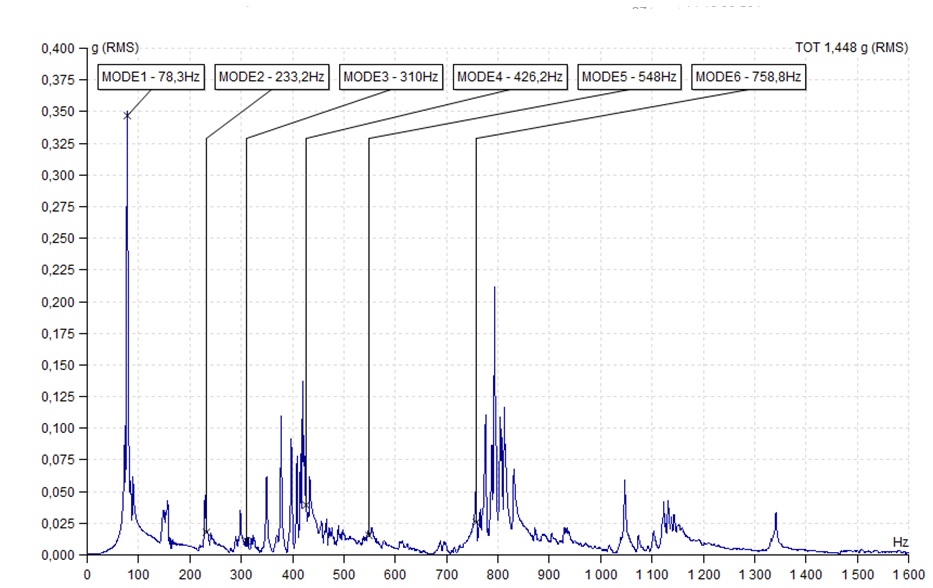Bump test
Bump test, also known as natural frequency measurement, is a method used to determine the natural frequencies of structures or mechanical systems. This test is conducted to obtain information about the object’s natural resonant frequencies, which can be crucial for design, analysis, and diagnostics.
The output of a bump test typically consists of a set of resonant frequencies of the object, which are determined by analyzing the response to the applied impulse. These frequencies are crucial for further analysis and design, such as evaluating the stability of the structure, tuning resonant systems, or optimizing the construction to minimize vibrations.
The output can also be a frequency spectrum, which shows vibration amplitudes as a function of frequency. This allows obtaining more detailed information about the characteristics of the object’s resonances.
Např. měření vlastních frekvencí lopak oběžného kola:
|
otáčky rotoru [rpm] |
825 |
712 |
548 |
385 |
269 |
225 |
0 |
|
*10x frekvence rotoru [Hz] |
137.5 |
118.7 |
91.3 |
64.2 |
44.8 |
37.5 |
0 |
|
frekvence rotoru [Hz] |
13.8 |
11.9 |
9.1 |
6.4 |
4.5 |
3.8 |
0 |
|
Mode 1 |
82.3 |
81.3 |
80.1 |
79.2 |
78.7 |
78.6 |
78.3 |
|
Mode 2 |
234.6 |
234.3 |
233.9 |
233.5 |
233.4 |
233.3 |
233.2 |
|
Mode 3 |
309.7 |
309.7 |
309.9 |
309.9 |
310.0 |
310.0 |
310 |
|
Mode 4 |
428.9 |
428.2 |
427.4 |
426.8 |
426.5 |
426.4 |
426.2 |
|
Mode 5 |
548.1 |
548.1 |
548.1 |
548.1 |
548.0 |
548.0 |
548 |
|
Mode 6 |
758.9 |
758.9 |
758.9 |
758.9 |
758.8 |
758.8 |
758.8 |
Table of natural frequencies of the blade as a function of rotor speed:

Spectrum of natural frequencies of the blade at rest, / 0 rpm:
